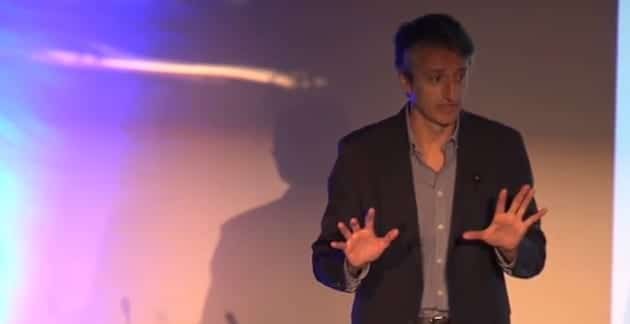The 10 Routes of the Ingenuity they represent the mental cartography of the great geniuses of history. Men and women who dared to think differently, to break some rules, not to lose their childish essence, to see things positively, to think backwards, to join things that no one had joined before ... and those were the keys of your success.

Obviously, it was not easy for them in environments that were too used to thinking with the left brain (that of logic, rules, reasons), and to look with some suspicion and even concern at people who thought more with the right hemisphere (in creativity, sensitivity, emotions). In short, these people carried in their travel backpack towards innovative ideas glasses of curiosity, a book of questions rather than answers, courage in the face of fear, a seafaring attitude in the face of the comfort of the beach tourist, tolerance for failure and good humor.
Before explaining the main ideas, I leave you with the first part of the conference:
César García-Rincon de Castro, invites us in this conference to enter a theme park based on the thought patterns of the most ingenious people in history, traveling the routes that we summarize here:
1. Thinking backwards (two-way thinking). Thinking from right to left, or top to bottom, from present to past, not always in the same direction.
2. Think in colors (translation thinking). Think from various perceptual positions, spaces, or mental formats.
3. The ying-yang (positive thinking). Turn a problem into an opportunity to improve or innovate.
4. No instruction manual (substitute thinking). Play to change the rules and patterns of a game or social system, or thought scheme to see what happens and what changes.
5. The conquest of an idea (proactive thinking). Challenging the comfort zone, safety and mental economy that ties us to mediocrity or the same old thing.
6. Semantic networks (cartographic thinking). Develop ideas in mind map format, with words that generate a new semantic field about an idea or product.
7. Film ideas (plot thinking). Create a narrative plot with various events, formats or fragments of an experience or reality.
8. The flexible and plastic mind (infantile thought). Bring out the inner child through children's tasks and games, give yourself permission to create without censorship or barriers.
9. Multipurpose philosophy (divergent thinking). Find new uses or utilities for something that has always served the same purpose, maximize what we have or use.
10. Democracy of the Y (associative thinking). Overthrowing our "inner tyrant of the OR" (or this or that) and facilitate the democracy of the Y (and why not this and that?).
I leave you already, the second part of the conference:
More information on the web www.rutasdelingenio.com
To contact the speaker: www.cesargarciarincon.com